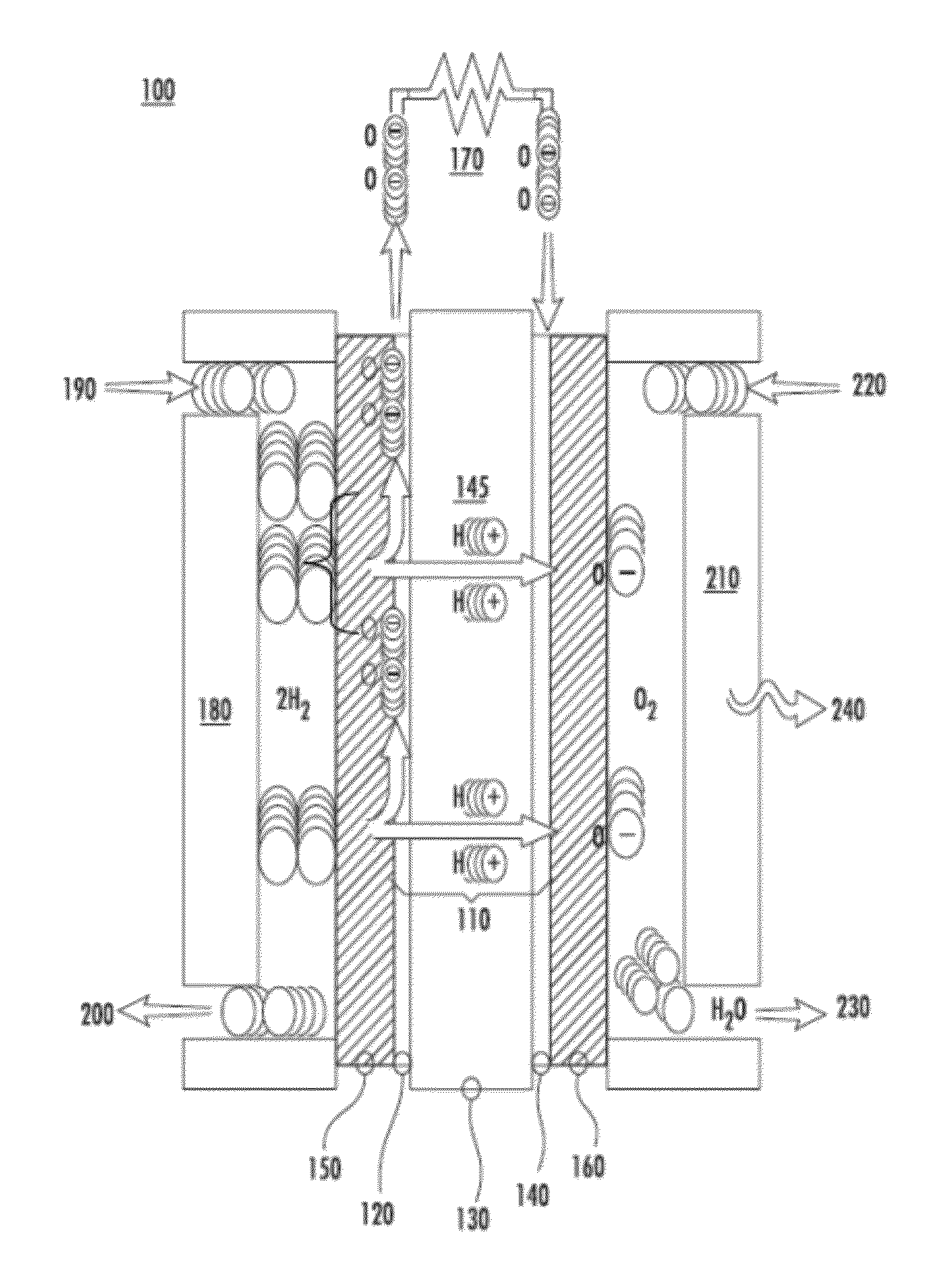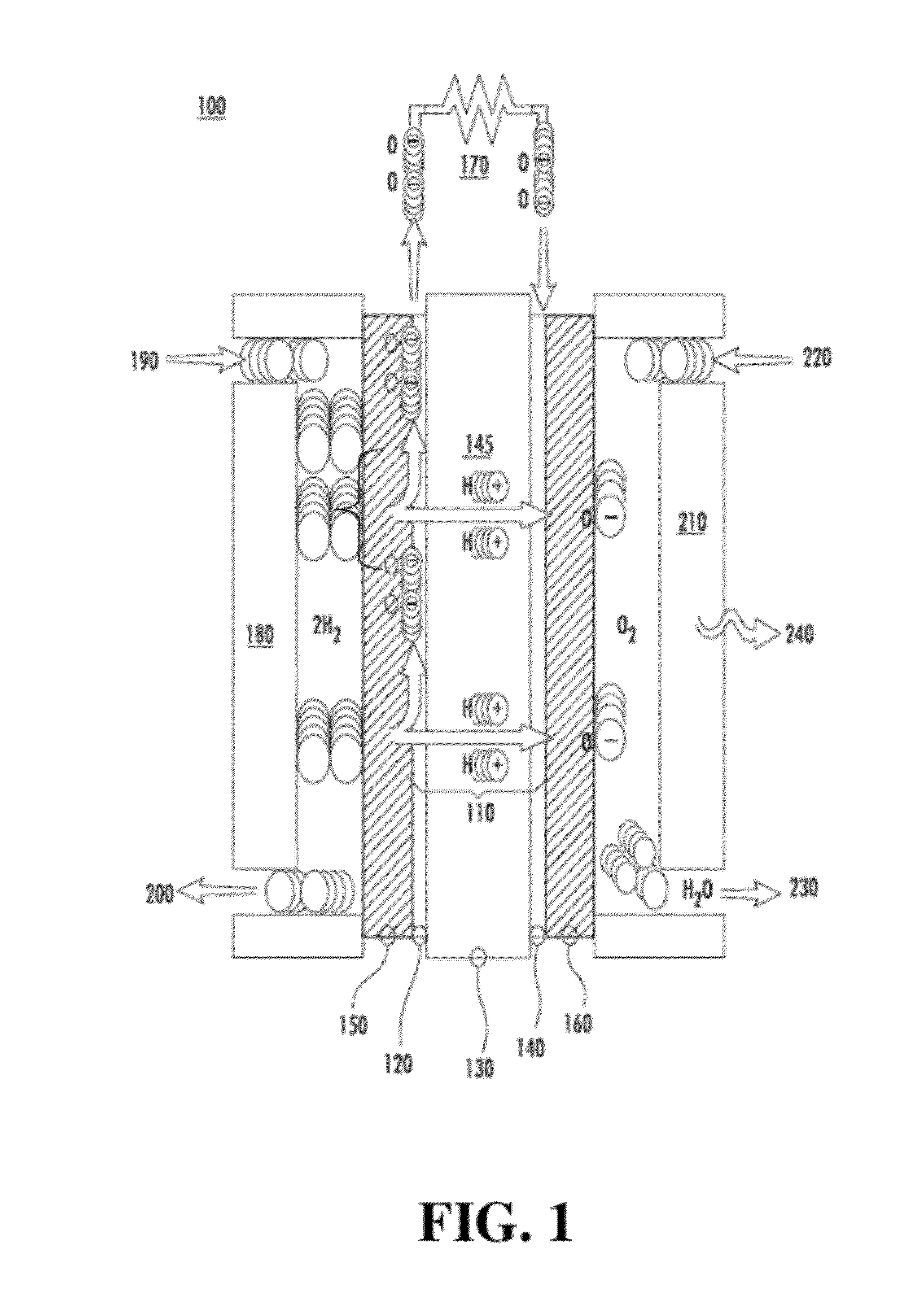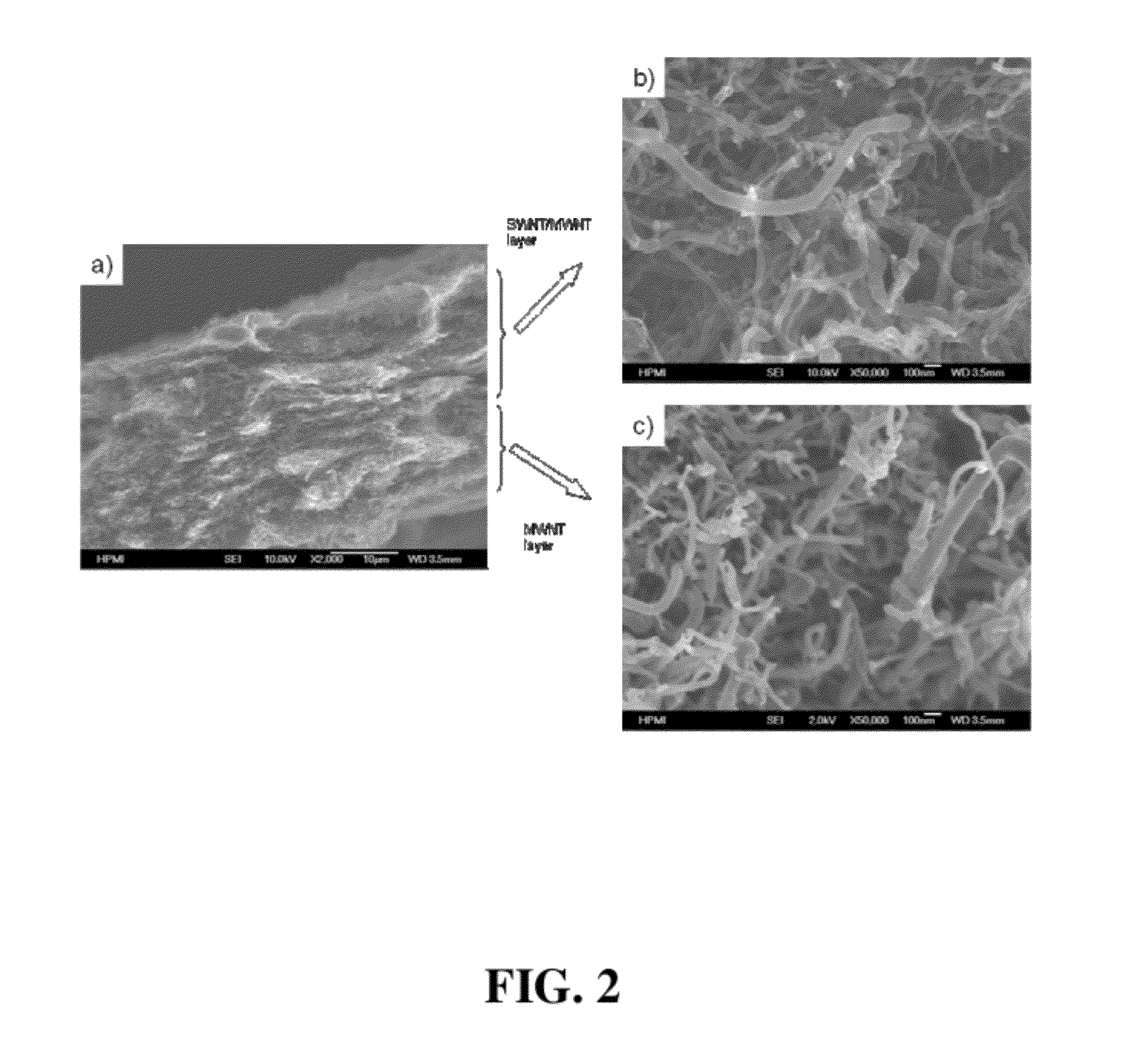Carbon nanotube and nanofiber film-based membrane electrode assemblies
a carbon nanotube and film-based technology, applied in the field of membrane electrode assemblies, can solve the problems of failure to establish the three-phase boundary (tpb) between gas, electrolyte, fuel cell electrocatalyst, etc., and achieve the effects of improving electrical and/or mechanical properties of the structure, maximizing the three-phase reaction coefficient, and little or no binder
- Summary
- Abstract
- Description
- Claims
- Application Information
AI Technical Summary
Benefits of technology
Problems solved by technology
Method used
Image
Examples
examples
[0070]Electrical Property Evaluations
[0071]Preparation and Characterization of Buckypaper
[0072]SWNTs 0.8-1.2 nm in diameter and 100-1000 nm long were obtained from Carbon Nanotechnologies Inc, while CNFs 100-200 nm in diameter and 30-100 μm long from Applied Sciences Inc were produced using a chemical vapor deposition (CVD) method. All materials were used as received without further purification.
[0073]SWNT / CNF-mixed buckypaper sheets were produced using a vacuum filtration method. A mixture of SWNTs and CNFs (w / w 1:3 or 1:5), in 1000 ml deionized water was sonicated to form a homogenous dispersion by adding Triton-X (Dow) as a surfactant. The suspension was then filtered under a vacuum through a nylon membrane (Millipore) having a 0.45 μm pore size. The filtrate film was washed thoroughly with isopropanol to remove the residual surfactant. After drying, a thin film layer was peeled from the filtration membrane and a freestanding buckypaper (BP) was obtained.
[0074]A Tristar 3000 (Mic...
PUM
| Property | Measurement | Unit |
|---|---|---|
| Efficiency | aaaaa | aaaaa |
| Efficiency | aaaaa | aaaaa |
| Temperature | aaaaa | aaaaa |
Abstract
Description
Claims
Application Information
 Login to View More
Login to View More - R&D
- Intellectual Property
- Life Sciences
- Materials
- Tech Scout
- Unparalleled Data Quality
- Higher Quality Content
- 60% Fewer Hallucinations
Browse by: Latest US Patents, China's latest patents, Technical Efficacy Thesaurus, Application Domain, Technology Topic, Popular Technical Reports.
© 2025 PatSnap. All rights reserved.Legal|Privacy policy|Modern Slavery Act Transparency Statement|Sitemap|About US| Contact US: help@patsnap.com



